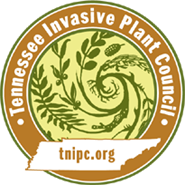Broussonetia papyrifera (L.)L'Her. ex Vent.
Paper Mulberry| Category |
|---|
| Tree |

Description
Paper mulberry is a tree in the mulberry family (Moraceae) that is used extensively as an ornamental landscape plant in the United States. Paper mulberry is a large shrub or small tree with a mounded appearance, capable of growth over 30 feet in height.Stem
The twigs of paper mulberry are hairy reddish brown, the bark is tan and smooth to moderately furrowedLeaves
Leaves alternate, opposite, or whorled, toothed, rough-textured above and grayish, velvety pubescent beneathLeaves are rough and fuzzy on top and velvety underneath. The leaves are densely gray-pubescent, often lobed or mitten-shaped, and are alternate, opposite or whorled along the stem. The leaf margin is sharply toothed, the leaf base is heart-shaped to rounded with pointed tips.
Flowers
Separate male and female flowers appear in the spring. Male flower clusters are elongate, pendulous, 2 ½ to 3 in. (6-8 cm) long, and composed of many individual flowers. Female flowers are globular and about 1 in. (2cm) in diameter.Fruit
Fruits are round, ¾ in. in diameter and orange to red in color. The fruits are reddish purple to orange, ¾-1 in. (1.5-2.0 cm) in diameter, and appear in summerImages
Photo:Chuck Bargeron, University of Georgia, Bugwood.orgMore images of Broussonetia papyrifera
Life History
Habitat
Paper mulberry invades open habitats such as forest and field edges.Origin and Distribution
The paper mulberry originated from Japan and Taiwan and is now Found from Illinois to Massachusetts, south to Florida and west to Texash2. Management Recommendations
Mechanical Controls
Cutting can work for many trees unless they are likely to resprout. It will need to be done continuously until the plants are no longer found.Herbicidal Controls
A cut stem treatment with 50% triclopyr amine (apply within 5 minutes of cutting)A basal bark treatment with 15%-30% triclopyr ester (trees with large DBH - diameter at breast height - will likely take multiple treatments)
Biological Controls
Biological control is not currently available for this plant.Bibliography
http://www.invasive.org/library/FLFSNoxWeeds/papermullberry.htmlUSDA GRIN-NPGS Broussonetia papyrifera (L.) Vent.USDA Plants Database
USDA, NRCS. 2004. The PLANTS Database, Version 3.5 (http://plants.usda.gov). National Plant Data Center, Baton Rouge, LA 70874-4490 USA
